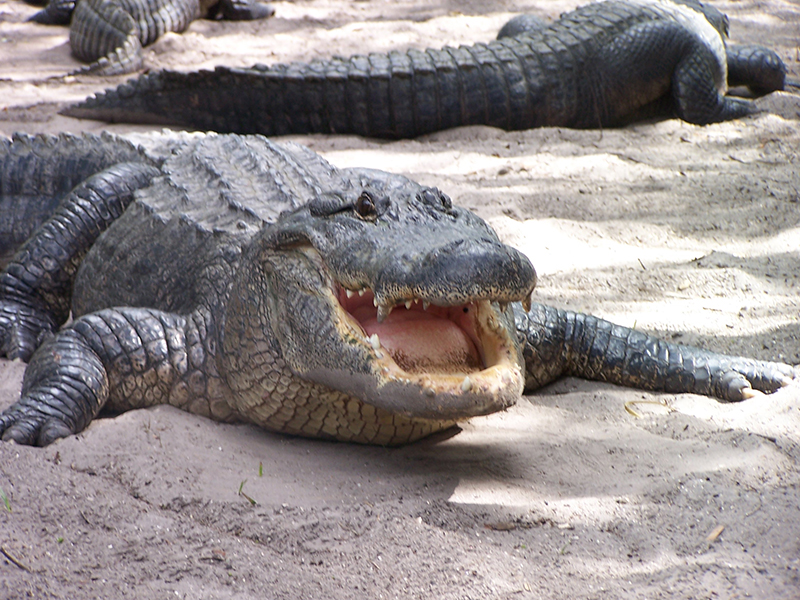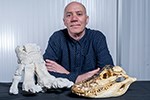Coming along in leaps and bounds – crocodiles can gallop but alligators can’t, new study finds
It’s a motion more closely associated with horses, but researchers have found that more species of crocodiles can gallop than previously thought. The study, which was led by the °ÄĂĹÁůşĎ˛ĘąćÂÉÂŰĚł (RVC), also discovered that by contrast alligators and caiman, also members of the crocodylian family, cannot manage more than a trot.

Yet, despite the difference in gaits used, crocodiles and alligators can all move at about the same speed – no more than 11 miles per hour. The ability to gallop (and to use an even more extreme gait called a bound) is likely down to the size and build of the Crocodylia in question.
Researchers at the RVC set up video cameras at the St Augustine Alligator Farm and Zoological Park in Florida, USA, and, working alongside experts from that organisation, studied the gaits and speed of 42 individuals from 15 species of Crocodylia.
They found that, as expected, larger Crocodylia moved relatively more slowly, with athletic ability decreasing as size increases. However, while many popular and scientific accounts previously assumed only a few species of crocodiles could gallop and bound, the researchers discovered that a further five species can in fact do so, including the critically endangered Philippine crocodile. This now means at least 8 species in total can gallop and bound.
Professor John Hutchinson, a specialist in evolutionary biomechanics at the RVC and study lead, commented:
“We were really surprised at one major thing: despite the different gaits crocodiles and alligators use, they all can run about as fast. So why do some crocodiles choose to gallop? We suspect that bounding and galloping give small crocodiles better acceleration and manoeuvrability, especially useful for escaping from danger. It seems like alligators and caiman stand their ground rather than run away with an extreme gait.”
John Brueggen, Director of St Augustine Alligator Farm and Zoological Park, said:
“We have been witnessing these behaviours in many of our specimens over the years, but it was wonderful to finally formalise these observations in a scientific study.”
The study findings are published in Scientific Reports. This study was funded in part by a grant from the European Research Council to John Hutchinson.
Notes to Editors
For more information please contact:
- Jasmin De Vivo (Jasmin.DeVivo@plmr.co.uk)
- Press Line: 0800 368 9520
About the RVC
- The °ÄĂĹÁůşĎ˛ĘąćÂÉÂŰĚł (RVC) is the UK's largest and longest established independent veterinary school and is a Member Institution of the University of London. It was the first in the world to hold full accreditation from AVMA, EAEVE, RCVS and AVBC.
- The RVC is ranked as the world’s number one veterinary school in the QS World University Rankings by subject, 2019.
- The RVC offers undergraduate and postgraduate programmes in veterinary medicine, veterinary nursing and biological sciences.
- In 2017, the RVC received a Gold award from the Teaching Excellence Framework (TEF) – the highest rating a university can receive.
- A research led institution with 79% of its research rated as internationally excellent or world class in the Research Excellence Framework 2014.
- The RVC provides animal owners and the veterinary profession with access to expert veterinary care and advice through its teaching hospitals and first opinion practices in London and Hertfordshire.
You may also be interested in:
-
RVC’s Professor John Hutchinson elected Fellow of prestigious Royal Society
John Hutchinson, Professor of Evolutionary Biomechanics at the °ÄĂĹÁůşĎ˛ĘąćÂÉÂŰĚł (RVC), has …

